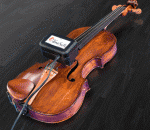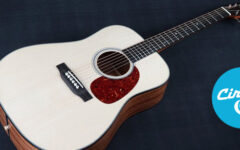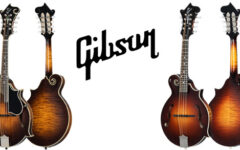 Ever since I first started playing bluegrass music 35 years ago, I have been hearing stories of musicians parking their acoustic instruments in front of stereo speakers to help break them in faster. The idea was that music from the speakers – vibrating the instrument when you weren’t playing it – would achieve the same natural “break in” effect as playing it all day long.
Ever since I first started playing bluegrass music 35 years ago, I have been hearing stories of musicians parking their acoustic instruments in front of stereo speakers to help break them in faster. The idea was that music from the speakers – vibrating the instrument when you weren’t playing it – would achieve the same natural “break in” effect as playing it all day long.
I never tried it myself, but know many pickers who swear by the practice, insisting that it helps new instruments open up faster, and offering a more balanced tone and response more quickly.
This is the concept behind ToneRite, a product developed by a trio of stringed instrument-playing engineers to provide a more direct, efficient method for accelerating this process.
The company was founded by Augi Lye, Ryan Frankel, and Hans Yeakel after Lye became frustrated that he didn’t have the time to play his new cello enough to break it in adequately. Augi had a background in acoustical physics, and enlisted Frankel (with his military signal processing expertise) and Yeakel (an industrial engineer) to assist in developing a product that could be demonstrated to deliver the goods.
 Their first production model was debuted in 2007, and the new Luthier Model design was introduced at the IBMA convention last week.
Their first production model was debuted in 2007, and the new Luthier Model design was introduced at the IBMA convention last week.
The ToneRite sits atop, or rests against, the bridge of your instrument where it delivers a specific set of frequencies to the vibrating surfaces. The company’s testing indicates that a minimum of 72 hours of use on a new instrument generates dramatic results, and recommends 2 or 3 similar 72-hour treatments in the first few weeks.
Regular use for an hour prior to playing a few times each week is also recommended for maintaining the tone and responsiveness of an older instrument.
Grasstowne mandolinist Alan Bibey is a fan…
“The ToneRite supercharged my instruments to their max in volume and tone! One of the most useful new products I’ve seen in a really long time!”
ToneRite models are available for guitar, mandolin, violin, viola, cello and bass. Prices range from $150-$250.
Full details can be found on their web site.







